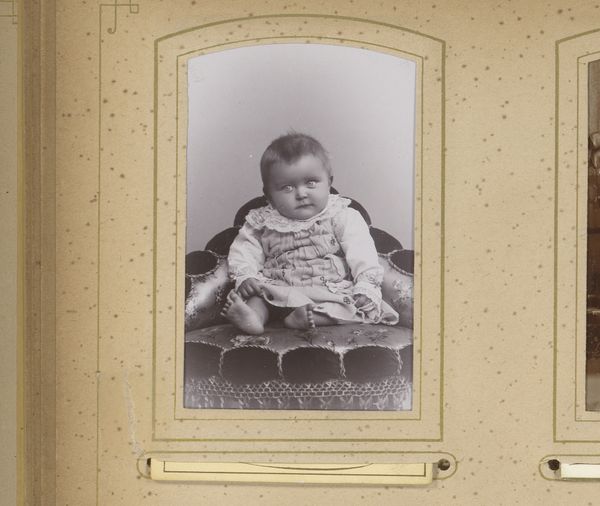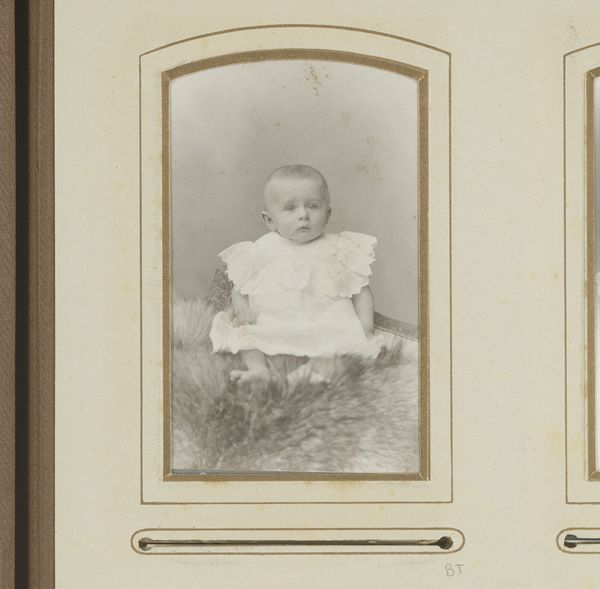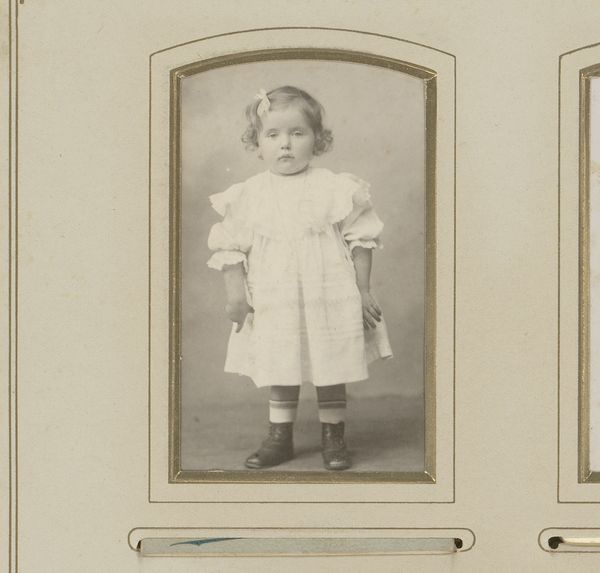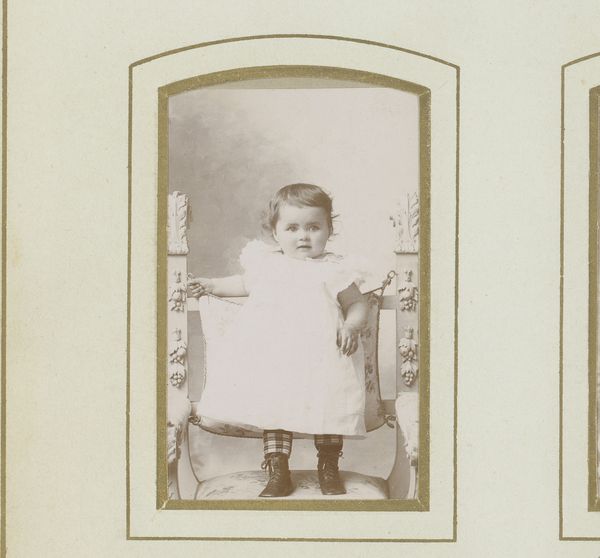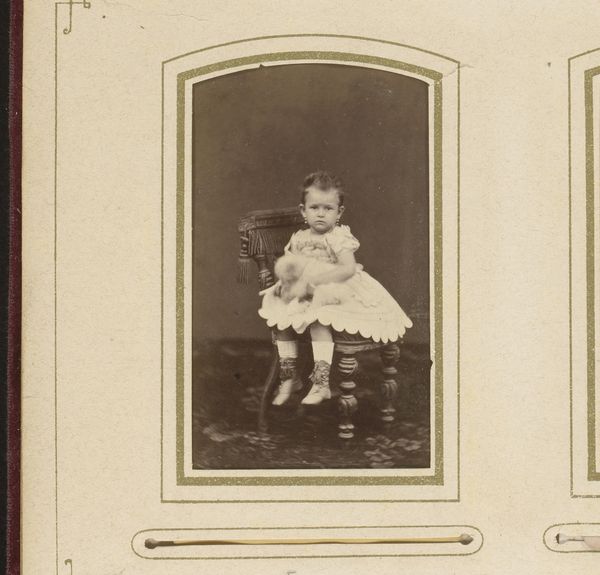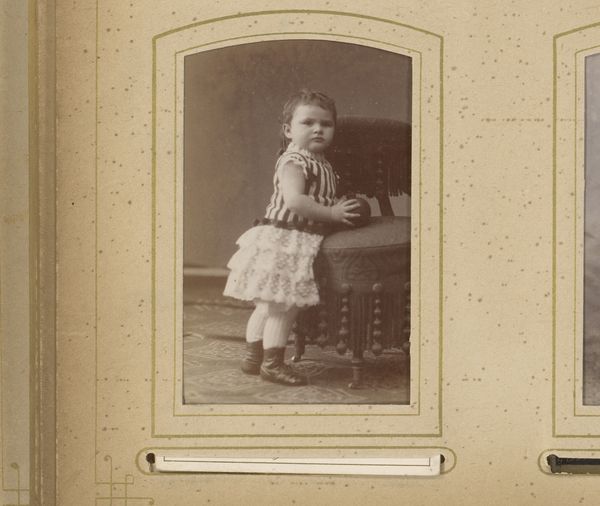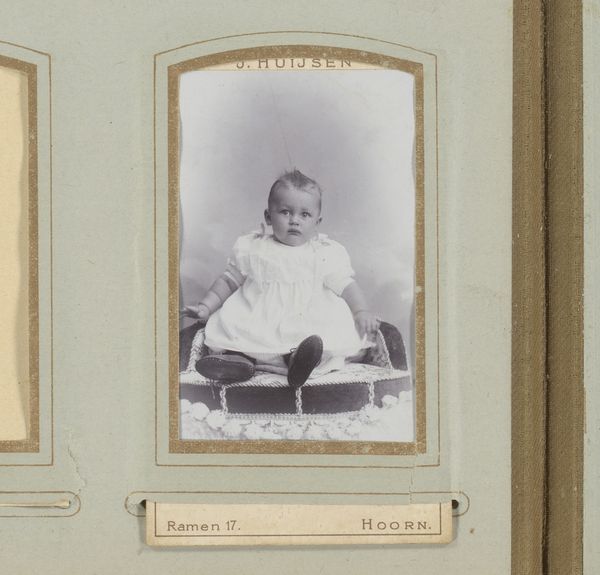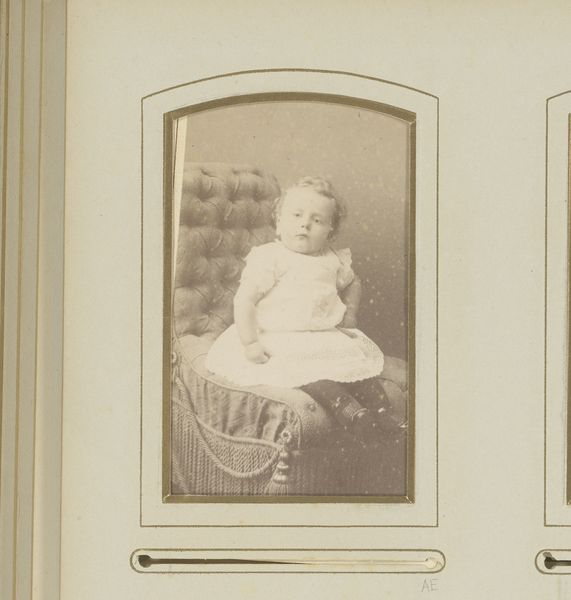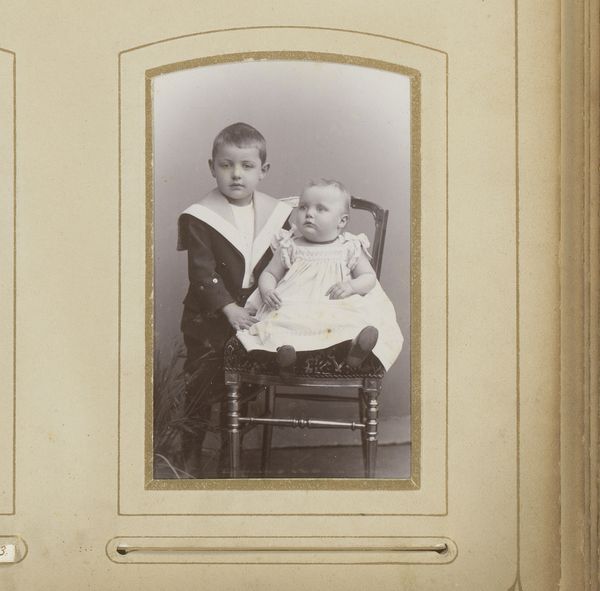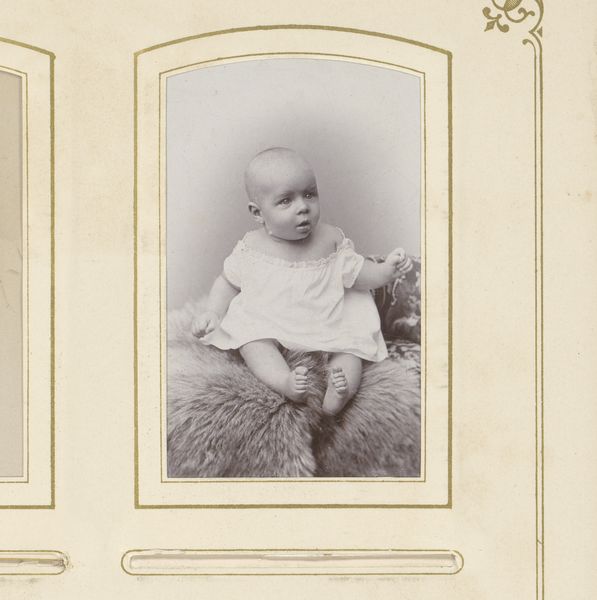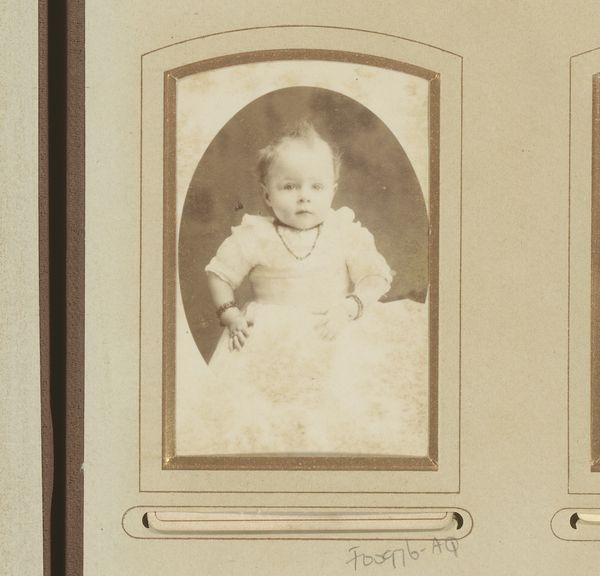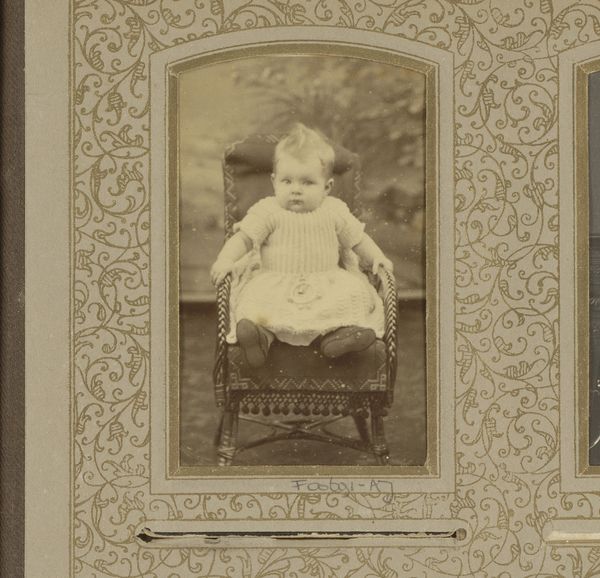
photography, gelatin-silver-print
#
portrait
#
photography
#
historical photography
#
gelatin-silver-print
#
19th century
Dimensions: height 84 mm, width 51 mm
Copyright: Rijks Museum: Open Domain
Editor: This gelatin-silver print, “Portrait of a Seated Girl in White Lace Dress” by B.J. Pottjewijd, likely created between 1880 and 1920, strikes me with its directness. There's a formal quality, yet also a touching vulnerability. What historical context shapes your interpretation of this portrait? Curator: Seeing this image through a historical lens, I think about the rise of photography and its impact on portraiture, particularly for the burgeoning middle class. This photograph isn't just a sweet image of a child. It's a statement of social mobility and cultural aspiration. Do you see evidence of that aspiration in the photograph itself? Editor: I suppose the white lace dress speaks to that aspiration, doesn't it? It would have been expensive and carefully maintained. There's also the chair she's sitting on—it seems quite ornate. Curator: Exactly. Think about how the very act of commissioning a portrait was becoming increasingly accessible, shifting from the realm of the aristocracy to a wider audience. These early photographs helped establish and solidify social identities. Why do you think a formal pose was chosen instead of a candid snapshot? Editor: Because back then the subjects had to keep still during the long exposure! But also, to mirror painting, right? There was something powerful in replicating traditional portraiture in a modern medium? Curator: Precisely. These photographic portraits functioned as both family heirlooms and demonstrations of societal belonging. In a way, they democratized the concept of having your likeness preserved, yet also reinforced existing social hierarchies through stylistic choices. This democratization makes one think of who has the power to control who and what to represent, as photography is easily falsifiable and controllable to suit narratives. Editor: So, beyond a cute portrait, it is also an artifact representing power structures. It’s really incredible how much history can be packed into a single image. Curator: It is truly rewarding when thinking of art beyond what you see on the surface allows for greater contextual understanding. I agree.
Comments
No comments
Be the first to comment and join the conversation on the ultimate creative platform.
